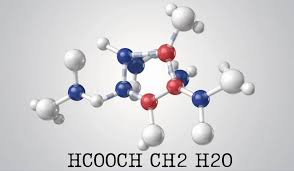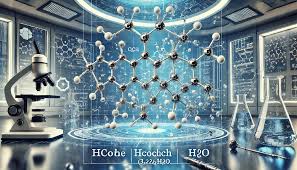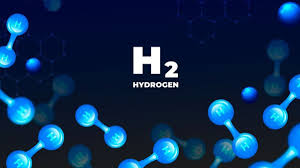What Is HCOOCH CH2 H2O?
In the world of organic chemistry, certain chemical compounds play pivotal roles in both industrial and environmental applications. One such combination involves HCOOCH, CH2, and H2O. These compounds might appear simple at first glance, but their interaction, formation, and behavior tell an interesting story. Understanding them together, rather than in isolation, gives a clearer view of their significance in both synthetic chemistry and eco-friendly solutions.
Let’s break down this trio in detail and explore why their connection matters.
Table of Contents
Why Focus on HCOOCH CH2 H2O?
When combined, HCOOCH CH2 H2O represents more than just a string of chemical symbols. It reflects a reaction pathway involving organic molecules, possibly pointing toward formate esters, methylene intermediates, and water as a solvent or product. Each of these has its place in biochemical and industrial fields. Their connection can be understood better when analyzed through reaction mechanisms, functional groups, and environmental impact.
HCOOCH: The Ester with a Role
HCOOCH, better known as methyl formate, is an organic ester derived from formic acid and methanol. Its chemical structure includes a formate group and a methyl group. This compound is:
- Volatile, making it useful in quick-evaporation solvents.
- Flammable, which demands careful handling.
- Eco-conscious, when produced from green sources like biomass.
Its importance spans from perfumes to fuels. Due to its biodegradability and lower toxicity, methyl formate or HCOOCH serves as a safer alternative to harsher chemical solvents.

CH2: The Methylene Mystery
The CH2 group, or methylene, exists as a reactive intermediate in many chemical reactions. It is not a compound one stores in bottles. Instead, it shows up temporarily during organic transformations. Why does it matter?
- Bridges carbon atoms in complex molecular chains.
- Drives reactivity in cycloaddition and insertion reactions.
- Crucial in polymer formation, often acting as a connector.
In reactions involving HCOOCH CH2 H2O, the CH2 group can play the role of a bridge or intermediate, altering the structure or function of the resulting molecule.
H2O: The Universal Solvent
No discussion involving chemicals is complete without H2O, water. In the context of HCOOCH CH2 H2O, water may act in several roles:
- Solvent to dissolve and facilitate the reaction.
- Product formed during esterification or hydrolysis.
- Reactant in breaking esters into acids and alcohols.
Water’s eco-friendliness, availability, and nontoxic nature make it central to sustainable chemical processes. It allows reactions to occur without introducing harmful solvents into the environment.
How Do HCOOCH CH2 H2O React Together?
Let’s explore how these three might interact:
- Ester Hydrolysis:
HCOOCH (methyl formate) reacts with H2O to break into formic acid and methanol. This is a common hydrolysis process. - Polymerization Potential:
With CH2 acting as a methylene linker, and the ester and water participating, you might observe a pathway leading to polymer chain formation, especially in greener plastic alternatives. - Green Chemistry Application:
In sustainable chemistry labs, combining HCOOCH CH2 H2O may yield biodegradable products. This means fewer pollutants, less waste, and better compatibility with natural ecosystems.

Are These Chemicals Safe for the Environment?
This question matters now more than ever. Here’s a breakdown:
- HCOOCH: Low toxicity, quickly broken down in air and water.
- CH2: Not persistent, and used only as an intermediate.
- H2O: Safe and essential.
When used together under controlled conditions, these chemicals are eco-friendly. They enable low-emission reactions, support cleaner production, and align with green chemistry principles.
What Industries Use HCOOCH CH2 H2O?
A number of industries benefit from this combination:
- Pharmaceuticals: In synthesis of compounds with methylene bridges.
- Fragrance & Flavors: HCOOCH is used in fruity scents.
- Bioplastics: Potential polymers using CH2 linkers and water-assisted synthesis.
- Agrochemicals: For safe pesticide formulations or intermediates.
Their versatility, safety, and performance make them highly attractive.
What Makes This Trio Eco-Friendly?
Eco-friendliness isn’t just a buzzword. In this context, it’s backed by:
- Biodegradability: These chemicals break down naturally.
- Low toxicity: They pose little to no harm to humans or wildlife.
- Sustainability: Can be sourced or produced from renewable resources.
- Efficient Reactions: Minimal waste, maximum output.
That’s why HCOOCH CH2 H2O combinations are gaining attention in sustainable research.

Are There Any Drawbacks?
While largely safe, a few precautions matter:
- HCOOCH is flammable.
- CH2 intermediates need control due to reactivity.
- Water purity affects the reaction yield.
With proper safety protocols, these issues are easily managed.
Can HCOOCH CH2 H2O Lead to Innovation?
Absolutely. New materials, greener fuels, and smarter drugs might all begin with understanding small molecules like these. Their combinations can lead to novel polymers, cleaner reactions, and even renewable energy solutions.
Also read: Discover Why Speedyshort.com is the Ultimate Tool for Smarter Links
Final Thoughts
The combination of HCOOCH CH2 H2O might seem niche, but it offers a window into smarter, safer chemistry. From everyday products to cutting-edge research, these compounds deliver performance without compromising the planet. Exploring them isn’t just about chemistry—it’s about building a better, cleaner world.
Let this review be a reminder: sustainable solutions often begin with understanding the building blocks. And in this case, HCOOCH CH2 H2O stands as a model for responsible, high-performing chemistry.


